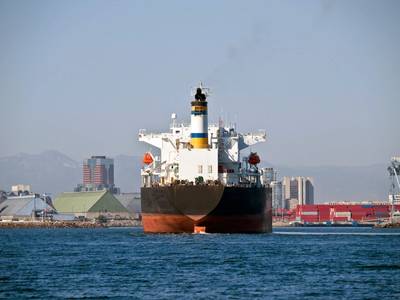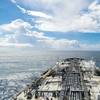California's New Emissions Rules Pose Challenges for Tankers -DNV
Tanker vessels may face challenges calling California when new emissions regulations take effect, according to a new DNV report.
The report, commissioned by Western States Petroleum Association (WSPA), indicates tanker vessels and terminals in California could struggle to meet the 2020 amendments to California Air Resources Board's (CARB) Ocean-Going Vessels At-Berth Regulation. DNV's technology assessment looked at the feasibility of the current technologies developed around emissions control strategies to determine whether these assets could meet the regulations safely and reliably by as early as 2025 while still meeting the existing and current regulations and standards.
"We take pride in our commitment to protecting the safety of our workers, communities, contractors, and the environment," said Sophie Ellinghouse, Vice President, General Counsel & Corporate Secretary at WSPA. "That was one of the main drivers for us to engage DNV. The complexity of the regulatory landscape facing the industry is only increasing. It is important to understand the intersection of today's technology with the regulations that are coming down the pipeline, and what it means for safety."
DNV said it engaged an extensive array of subject matter experts and key stakeholders in the assessment using the company's technology qualification process. State, national and international stakeholders included representatives from CARB, the ports, terminal operators, tanker operators, industry groups, and third-party technology providers. "The industry faces ambitious climate goals, and to achieve them, collaboration is essential," said Antony DSouza, Executive Vice President and Regional Manager, DNV Maritime Americas. "The decarbonization challenge is a responsibility we all as stakeholders share; both within the industry, and beyond. At DNV, we believe that transparency enables progress; by sharing insight, knowledge, and ideas with one another, we can go further than we ever could do alone."
DNV held multiple workshops with the stakeholders where the current CARB-approved emission control (CAECS) technologies were examined. Each CAECS was evaluated and discussed in detail, including the technologies' degree of feasibility and maturity, safety concerns and safeguards, operational considerations, environmental aspects, and regulatory dependencies.
From additionally establishing design requirements, estimated cost and the minimum timelines required to implement each emissions control strategy, the DNV report showed tanker Onshore Power (OPS) technology needs significant development and risk mitigation before an industry-wide implementation for tankers that operate worldwide. For tankers in this context, land-based and barge-based emissions capture and control systems are in early development.
The report also found the current regulatory timeline for the emissions control strategies considered in the 2020 amendments to CARB’s Ocean-Going Vessels At-Berth Regulation is insufficient to address and mitigate the outstanding safety and operational risks.
In addition, low or zero-carbon fuels may significantly reduce the long-term value of investments for at-berth emissions management.












